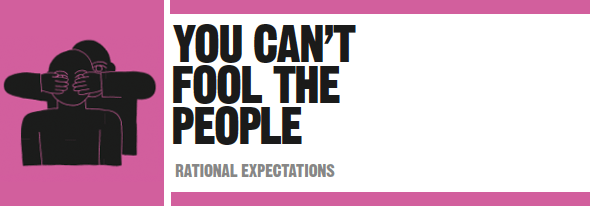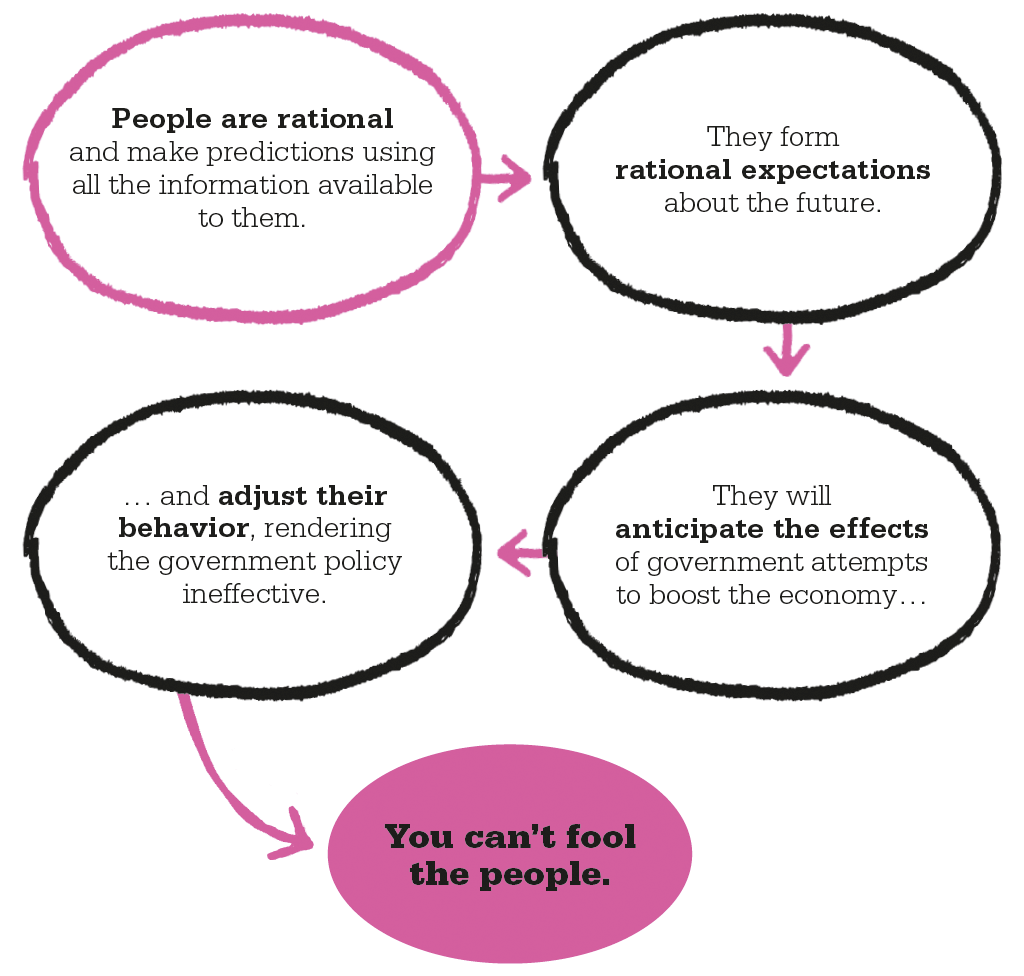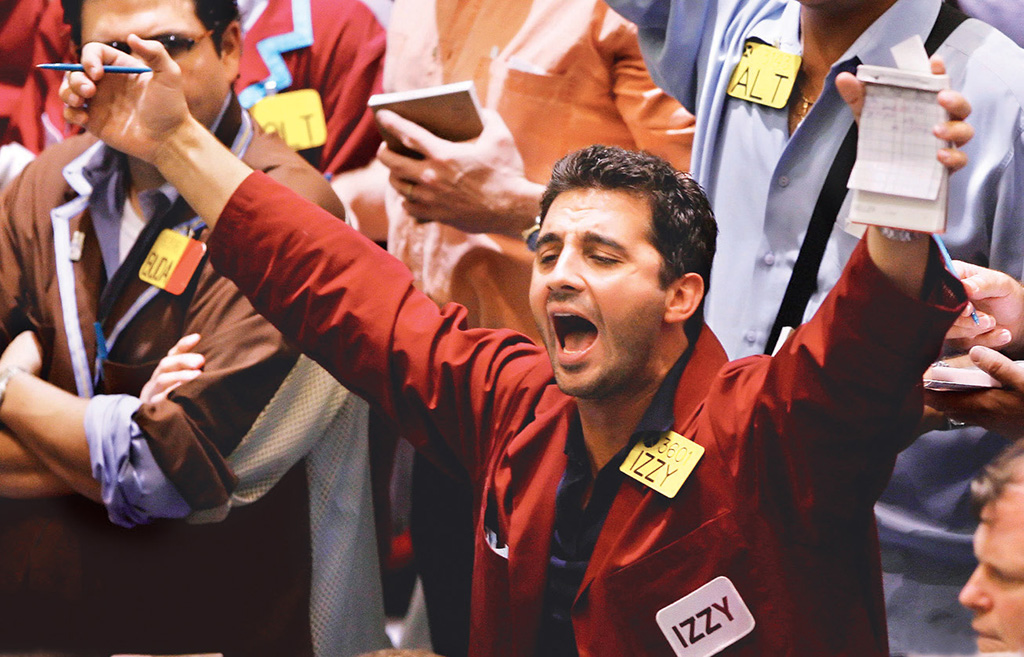

The macroeconomy
John Muth (1930–2005)
Robert Lucas (1937–)
1939 British economist John Hicks analyzes the way that expectations of the future change.
1956 US economist Philip Cagan uses “adaptive expectations” to explain forecasts based on the past.
1985 US economist Gregory Mankiw contributes to the emergence of the “New Keynesian” economics, which uses new models that incorporate people’s rational expectations of the future into their calculations.
The rise of government intervention and spending after World War II provided an important new way for economists to think about the whole economy. In particular they believed that the government could boost the economy by using monetary and fiscal (tax and spend) policies to achieve permanently higher output and lower unemployment.

Early criticisms of these Keynesian models involved a closer examination of the idea of “expectations.” Expectations matter because what people think will happen in the future affects their behavior in the present. Initially, expectations were taken to be “adaptive.” This assumes that people form expectations of the future based solely on what happened before—if Event A led to Event B, it will do so again. In each case individuals adjust for the gap between what they expected to happen and the actual outcome.
The need to allow for expectations within economic theory was acknowledged to weaken the outcome of Keynesian policies, where governments increase spending to raise demand. These policies assume that if people’s wages are increased as a result of a government boost to the economy, an increase in their real economic activity will occur—they will supply more work. In reality the increased demand also leads prices to rise, so in real terms, their wages have not. People are temporarily fooled into thinking that their increased money wages reflect a raise in real wages because they take a while to realize that prices have also risen—their expectations about future price increases adjust slowly. In this way it is possible for a government to increase economic output through monetary or fiscal policy by (in effect) fooling people. However, this only works in the short term: once people’s expectations catch up, they realize that their real wages have not risen, and the economy reverts to its original lower level of employment.

A father passes on his knowledge of car maintenance to his son. The son will make future economic decisions, such as which car to buy, based partly on this knowledge.
This way of modeling expectations was simple but flawed. If people only looked at the past when making their forecasts about the future, they would be likely to get their forecasts persistently wrong. Unexpected shocks to the economy, pushing it away (even temporarily) from its previous path would be turned into permanent errors in forecasting. But if people made persistent forecasting errors, they would persistently lose out against the market—and this did not seem to be a realistic picture of people’s behavior.
It was dissatisfaction with the theory of adaptive expectations that helped lead US economist John Muth toward a theory of “rational expectations” in 1961. At the heart of his theory is a very simple idea. If buyers in a market are rational, they do not simply guess at future prices by looking at previous ones. Instead, they will attempt to forecast future prices based on the information available and—critically—using a correct model of the economy. They will make educated predictions rather than blindly following past behavior. They will do this because if they do not form their expectations rationally, they will be punished by the market and lose money.
"It is rather surprising that expectations have not previously been regarded as rational dynamic models, since rationality is assumed in all other aspects of entrepreneurial behavior."
John Muth
We use rational expectations all the time. Farmers, for instance, make decisions about what to plant based on past prices, current conditions, and future probabilities. They do not assume that if they grow the same amount of the same commodity they did five years earlier, it will achieve the same market price now—and neither do the commodity dealers trading in agricultural goods. Punishment from the market forces people to behave rationally and, over time, their expectations can be assumed to be as good as the best available economic model. The theory of rational expectations is deceptively simple but has startling consequences. Under adaptive expectations government intervention might work temporarily because it could take people by surprise. They would not anticipate future government policies and so an unexpected expansion of spending would act like a positive “shock” in the economy, with short-term real effects. Even these temporary effects are impossible under the theory of rational expectations since people’s forecasts for price increases adjust immediately.

A farmer in Australia inspects his crop. Farmers do not decide what to plant based solely on the past. They also weigh factors such as the weather and levels of demand.
In 1975, two US economists, Thomas Sargent and Neil Wallace, claimed that if expectations are rational, not only would individuals begin to expect government intervention, but they would adjust their behavior in such a way that policy would be rendered ineffective. Assuming rational expectations, people would know that the government had an incentive to generate shocks, such as trying to keep down unemployment. They would adjust their expectations accordingly. For example, individuals would understand that when a government attempts to use monetary policy (such as cutting interest rates) to maintain employment, it leads to higher inflation. People therefore alter their expectations of wage and price increases accordingly. Instead of feeling wealthier, their expectation of inflation cancels out the effects of lower rates of interest looked for by the government. In this way monetary policy becomes completely ineffective because it will always be accounted for, and people’s changed behavior will undo it.
Policy makers had previously believed that there was a trade-off between unemployment and inflation—that governments could boost the economy and achieve higher employment in the long run with higher inflation. Under rational expectations, this trade-off dissolves. Unemployment is determined by the productive capacities of the economy: the productivity and technological capacities of its firms and the efficiency of its markets. Policy makers cannot boost the economy beyond this level of employment.
"The benefits of inflation derive from the use of expansionary policy to trick economic agents into behaving in socially preferable ways even though their behavior is not in their own interest."
Robert Hall
US economist (1943–)
US economist Robert Lucas pointed out that if individuals’ expectations do adjust with policy, this means that the whole structure of the economy—the sets of relationships between different households, firms, and the government—alters with changes in policy. As a result the effects of policy are not always those that are intended.
This became known as the “Lucas critique,” and it was powerful enough to convince most economists that attempts to model the whole economy through its structural relationships, as Keynesian models do, are flawed. Modeling should instead focus on people’s deeper underlying preferences, and the resources and technologies that direct individual behavior. Lucas suggested a “new classical” approach to macroeconomics, offering a partial return to the pre-Keynesian world. Later “real business cycle” models claimed that changes in employment are driven by changes in “real” labor factors, such as productivity increases or changes in people’s preferences for leisure over work. The critical feature of both real business cycles and new classical models is that they model the macroeconomy on the result of individuals’ rational behavior.
Although people do not have entirely rational expectations in reality, the assumption that they do helps economists to build workable models that are useful guides to the functioning of the economy. Rational expectations have come under criticism by behavioral economists who work on more psychologically realistic models.

Traders in financial markets form rational expectations based partly on the actions of their colleagues at work. Failure to read the signs will lead to punishment by the market.
US economist John Muth was born in 1930. He studied industrial engineering at Washington University in St. Louis, then mathematical economics at Carnegie Mellon (then called Carnegie Tech) in Pittsburgh. Carnegie had an extraordinary faculty in the 1950s, when Muth studied for his PhD there—it included future Nobel laureates Franco Modigliani, John Nash, Herb Simon, and later Robert Lucas.
Muth’s first paper on rational expectations was published in 1961 and was little noticed at the time. A shy, modest man, Muth was unable to find a publisher for a later article on the subject and so moved on to work in other fields, producing seminal work in the field of operations management and artificial intelligence. Other economics researchers such as Lucas and Simon furthered Muth’s work on rational expectations and won major awards for their contributions, but Muth remained unacknowledged by the wider world. He went on to teach at Michigan State and Indiana, both universities that lacked status but allowed him to satisfy his broad intellectual curiosity. He is considered to be the father of the “rational expectations revolution.” Muth died in 2005.
1960 Optimal Properties of Exponentially Weighted Forecasts
1961 Rational Expectations and the Theory of Price Movements
1966 Forecasting Models